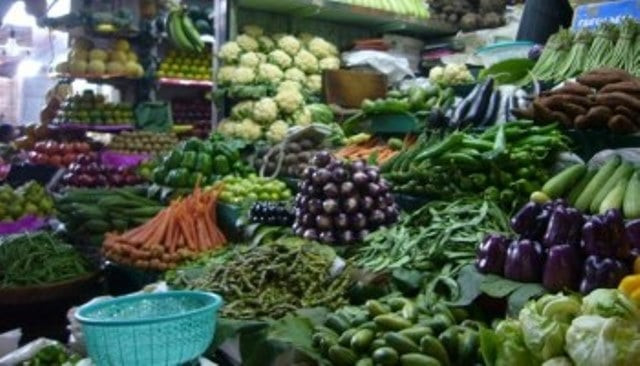Greengrocers ignore official rates
Consumers deprived of peak harvest season's benefit

Official prices of perishable food items across Lahore remained largely stable this week, but consumers saw little benefit due to widespread overcharging and profiteering by greengrocers, retailers and street vendors.
Despite seasonal declines driven by peak harvest conditions and hot weather, shoppers continued to pay 50 to 100 per cent above official prices.
For many residents, the failure to curb profiteering has become routine, with price lists issued by market committees often ignored and enforcement officials appearing disengaged from the daily struggles of the public. "What's the point of these official rates if no one follows them?" said Nadeem Qureshi, a father of three shopping in the Green Town Bazaar. "Vendors charge whatever they want, and no one checks them."
Farzana Bibi, a homemaker from the Township area, shared. "Every week, I see prices go up on the same itemseven when the government says they've gone down. We're told there's a price control system, but we've yet to see it work."
A review of official price lists and market surveys reveals stark contrasts.
Live chicken was officially priced between Rs397 and Rs411 per kilogram, yet vendors sold it for Rs570 to Rs680, with boneless chicken reaching as high as Rs1,050 per kilogram.
Despite official price control efforts, a wide range of essential vegetables and fruits continued to be sold at grossly inflated rates across Lahore's markets, burdening consumers with unchecked overpricing.
From staples like potatoes, onions, and tomatoes to seasonal fruits such as mangoes, cherries, and apricots, the official rates served as little more than a formality.
A-grade potatoes, fixed at Rs45 to Rs50, were routinely sold for up to Rs100 per kg, while onions listed at Rs30 to Rs35 fetched Rs80 in many places.
Tomatoes, meant to cost Rs3035, were sold at nearly triple the price. Garlic and ginger, essential kitchen ingredients, saw massive discrepancies, with official prices being consistently ignoredChinese garlic, for instance, was listed at Rs285300 but sold at Rs500, and ginger retailed for up to Rs1,000 against its listed Rs610640.
Similar patterns were observed in other vegetables. Bitter gourd, spinach, zucchini, and cucumbers, despite price reductions or stability, were sold far above government-fixed rates. Brinjal, priced officially at Rs6670, reached Rs140, and ladyfinger, listed at Rs124130, was sold at nearly Rs180.
Even lemons, after a Rs70 drop in official price, cost up to Rs600 per kilogram in the markets. Cauliflower and cabbage were among the worst examples, sold at over four times their official rates.
Fruits showed no relief either. Apples priced at Rs230390 were sold as high as Rs800, while bananas of all grades saw increases of Rs80130 over official rates.
Dates were listed at Rs430460 but sold for as high as Rs800-2,000 per kilogram. Melons, watermelons, peaches, and phalsa all saw similar surges, with consumers paying far beyond government-fixed prices.
This blatant disregard for official pricing mechanisms has rendered the price control system ineffective.
Despite daily updates and official campaigns, vendors openly flout regulations with impunity, exploiting both high demand and lax enforcement.





















COMMENTS
Comments are moderated and generally will be posted if they are on-topic and not abusive.
For more information, please see our Comments FAQ